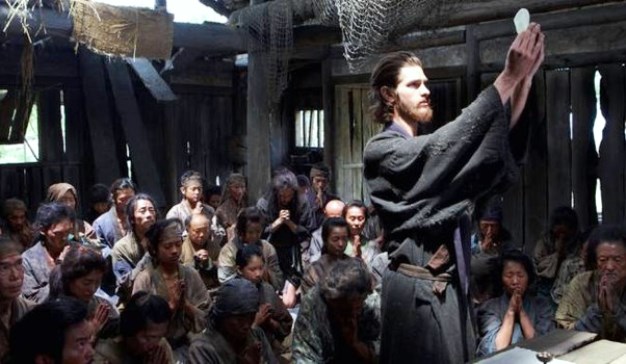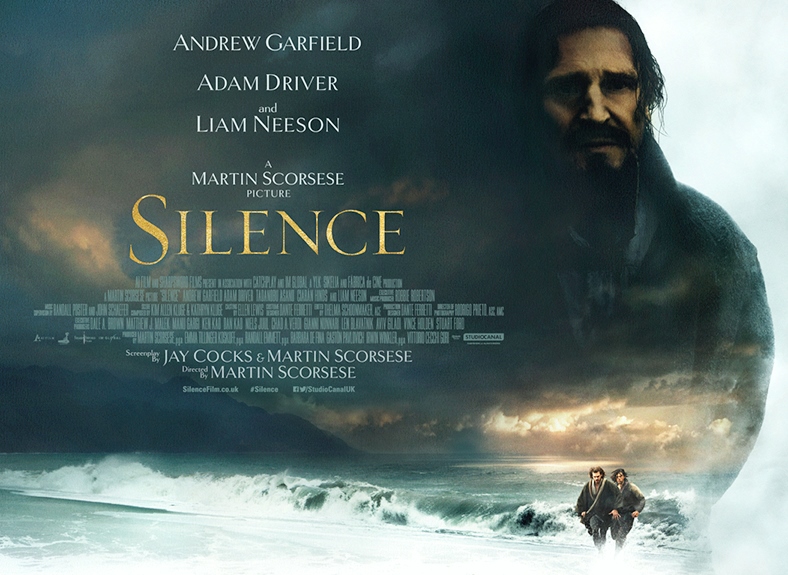
“A priest should act in imitation of Christ.”
The most troublesome of all Martin Scorsese’s films since there was time at the beginning I was ready to write it off as “unengaging” and “impervious,” but it pays off with revelation. It might have taken me several days to realize Silence has made me re-think life on Earth through the centuries when it comes to how religion has radically shaped cultures. This passion project by Scorsese follows two seventeenth century Jesuit priests who go from Portugal to Japan to track down their long lost predecessor, and to spread Christian faith to the converts, only to find brutal persecution in their wake. This is the most violent and gory film by Scorsese since “Casino” (1995), I thought, only to minutes later remember of the hyper-violent “Gangs of New York” (2002), one of the very few by Scorsese that I am not crazy about.
I was watching early sections of the film unsure of what Scorsese the artist was trying to say about priests suffering, or how it comes as a metaphor to his own life when he gave up priesthood as a vocation in his early life only to become one of the most legendary filmmakers ever. Once I completed the film, jolting thoughts rushed my head, but overall I am still unsure. He has Andrew Garfield playing the anguished Father Rodrigues, who refuses to commit apostasy, or we shall learn, never stomp on the face of Jesus Christ even if it is only a symbolic act. Adam Driver plays his partner Father Garrpe, whom we learn less about, only that he has a little less patience and yet grows some. Still, Garrpe would rather die himself than to see peaceful villagers die. The warlords and authorities persecute at will anybody who has faith for Jesus Christ, with brutal methods. By law, the people of Japan are ordered to believe in the Four Noble Truths of Buddhism, and all western religious influences and hegemonic intrusions are to be ridden.
One great cinematic scene is when Garfield sees a distorted reflection of himself and shrieks in despair the meaninglessness of everything he is doing. Yet he continues his quest to perform many forms of truth. There are heard rumors that Father Ferreira (Liam Neeson) has caved into the Japanese way of life and denounced God, and that only drives our protagonist to seek him out and clear his name. That is, if Ferreira is even alive. I wish Neeson had more to do in the film, but he has a couple of monologues where it becomes vital for the viewer to deconstruct what he is saying, and read the hidden messages in-between the lines. He hasn’t lost his pity for those suffering or dying.
The final passages are flummoxing to me, until I sorted them out, and became unflummoxed so to speak. We see the end of one’s priests life, and we get a Scorsese camera move that’s a high dolly shot that starts outside of a burial site, then bustles in on the coffin, then enters the coffin. We see an item clutched in the hands of the deceased.
And I’m wondering, this is a little too overtly symbolic! When does someone ever die yet palms one item in their hand that never gets noticed by the nokanshi! Then I realized, a few minutes brewing it over, there must have been others of the faith who believed in the Father and lived in silence with him. And placed that object in his hand.
Scorsese’s art is not easy, but it’s definitely more clear-cut than the dazzling but amorphous and at arm’s length “Kundun” (it’s one of the other very few Scorsese films I’m not crazy about). “Silence” is cruel and challenging, and maybe it is for masochists filmgoers, but I believe it’s also a title that will be preserved as one of the more “important works” decades from now. It didn’t radicalize my core like Scorsese’s “The Last Temptation of Christ” did. But for a long lasting time now I’m haunted by it.
Based on the 1966 historical novel “Silence” by Shusaku Endo. This is a tough film, but one I cannot shake away. At a later date, I revised it from three-and-a-half to four stars.
161 Minutes. Rated R.
PERIOD DRAMA / ADULT ORIENTATION / SPIRITUAL JOURNEY
Film Cousins: “The Passion of Joan of Arc” (1928); “Apocalypse Now” (1979); “The Last Temptation of Christ” (1988); “Kundun” (1997).





